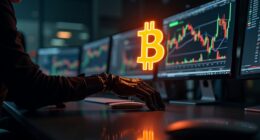What are the primary risks that investors must consider when evaluating XRP as a digital asset? The foremost concern centers on regulatory uncertainty, particularly stemming from the protracted legal battle initiated by the U.S. Securities and Exchange Commission (SEC) in 2020, which alleges that XRP constitutes an unregistered security. This unresolved litigation remains a critical determinant of XRP’s market trajectory and investor confidence, with recent court rulings favoring crypto assets providing some optimism. Nevertheless, the absence of a clear, consistent global regulatory framework exacerbates XRP’s legal and compliance vulnerabilities, perpetuating price volatility and fostering investor hesitancy. The March 2025 settlement, which ended the SEC lawsuit and clarified that XRP is not a security in secondary markets, has improved regulatory clarity but does not eliminate all uncertainties surrounding future policy developments, especially internationally, leaving investors cautious about regulatory risks.
XRP’s price history exemplifies significant volatility, manifesting in dramatic peaks exceeding $3.60 in mid-2025, alongside sharp retracements. The XRP/BTC trading pair further illustrates susceptibility to rapid directional shifts, influenced heavily by Bitcoin’s market dominance and broader sentiment fluctuations. Such dynamics reflect macroeconomic uncertainties and crypto-specific factors that can swiftly alter XRP’s fiat valuation, notwithstanding inherent token-level stability. *furthermore*, market saturation and intensifying competitive pressures from alternative cryptocurrencies compound these price instabilities, with bullish price projections contingent upon favorable regulatory outcomes, while more conservative scenarios predict constrained trading ranges. Historical data from 2013 to 2025 highlights risks associated with XRP investment that investors should not overlook.
Technological and competitive challenges also hinder XRP’s investment appeal. Despite Ripple’s initiatives to enhance cross-chain capabilities and decentralized finance (DeFi) integrations, XRP trails newer blockchain infrastructures that offer faster, lower-cost transactions. This lag threatens XRP’s relevance in payments and global transfer markets, as emerging platforms erode its market share and use case prominence. The cryptocurrency’s ecosystem growth is further impaired by a perceived lack of continuous innovation, potentially limiting its ability to sustain or expand its user base amid fierce competition. Additionally, while Ripple has expanded RippleNet usage and introduced an EVM-compatible sidechain, the competition from other scalable and versatile blockchains remains a significant headwind to XRP’s long-term adoption.
Additionally, XRP investors face risks related to fraudulent schemes and custodial vulnerabilities. Promises of exorbitant yields through cloud mining and yield farming often mask Ponzi-like structures, with unregulated platforms lacking transparency and auditability exposing investors to significant losses. These factors underscore the necessity for rigorous due diligence within a market fraught with scams.
While recent institutional inflows and technical chart patterns have sparked a degree of bullishness, the overall investment landscape remains nuanced. XRP’s prospects hinge on resolving legal uncertainties and demonstrating genuine transactional growth—parameters that will ultimately dictate whether current optimism withstands inherent risks or succumbs to market realities.








